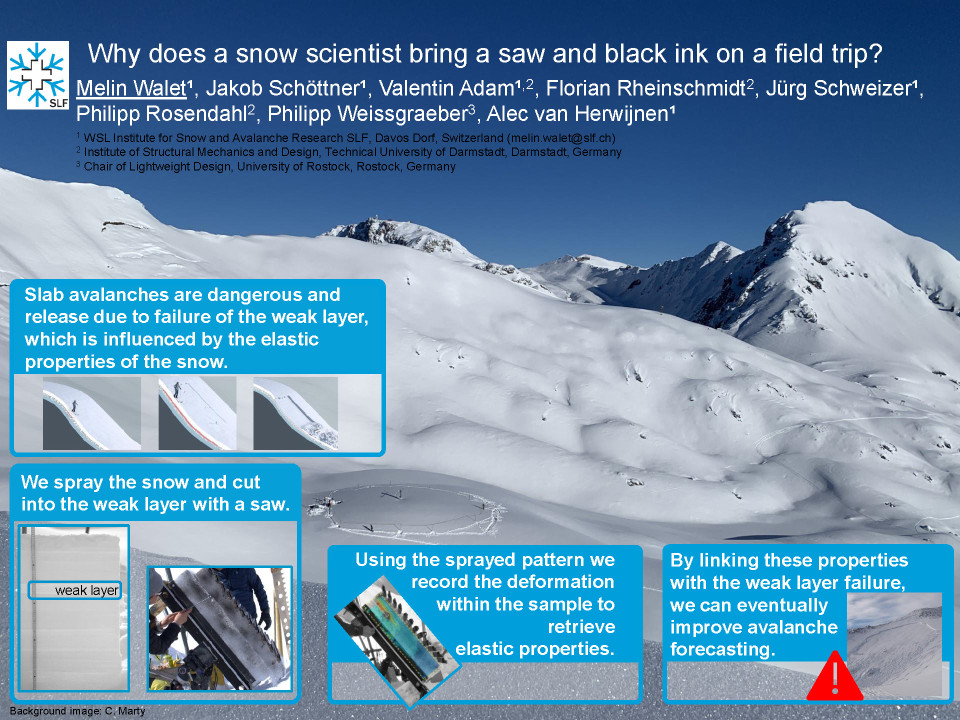Introduction
Snow avalanches come in many different types and sizes. The deadliest type of avalanche, the dry-snow slab avalanche, releases after a crack propagated through a weak layer inside the snowpack. Understanding the fracture properties of weak layers is thus essential to improve avalanche prediction. As avalanches only release on slopes steeper than 30 degrees, a crack in a weak layer is always subjected to a combination of shear and normal forces, making crack propagation a mixed-mode fracture problem. However, little is known about the mixed-mode fracture toughness of weak layers, a material property describing the resistance to crack growth under different loading conditions.
Methods
To investigate the fracture toughness of weak snowpack layers, field experiments were conducted using natural snow samples containing a buried weak layer. Each experiment involved extracting a one-meter-long sample from the snowpack, ensuring the inclusion of the target weak layer. The sample was then placed in a tilting device, loaded with weights (metal rods) and tilted to the desired angle. We then used a snow saw to cut into the weak layer until reaching the critical cut length, at which point the crack propagated across the sample. The side wall of the snow samples was speckled with black dye and recorded on video.
From the recorded videos, accurate values of critical cut length were extracted. We then used digital image correlation (DIC) analysis on the video recordings to assess the displacement within the snow samples. These displacement fields served as input to derive the elastic properties of the weak layer and the overlying snow slab using a closed-form model. In a last step, the collected input parameters and the retrieved elastic properties were used to obtain a fracture toughness value and the respective mode I and mode II contribution in each test.
Results
We performed over 150 experiments and obtained fracture toughness envelopes for various weak layers. Fracture toughness values were typically around 2 J/m2 in mode II and 0.5 J/m2 in mode I. For the experimental setup used, our results indicate that the fracture toughness was larger in mode II than in mode I in line with the behaviour observed in other materials. Furthermore, we observed that the fracture envelope expands as the weak layers strengthen over time.
Discussion and conclusion
Our results provide valuable benchmark data for numerical models and much needed data on mixed-mode fracture toughness values of weak snowpack layers to improve avalanche prediction.
In the future, we will investigate the fracture properties of numerous weak layer microstructures. Since the snow microstructure most likely controls the mechanical properties, a characterization of the microstructure is essential. The connection between weak layer fracture and the microstructure of weak snowpack layers can be used to ultimately improve slab avalanche forecasting.
